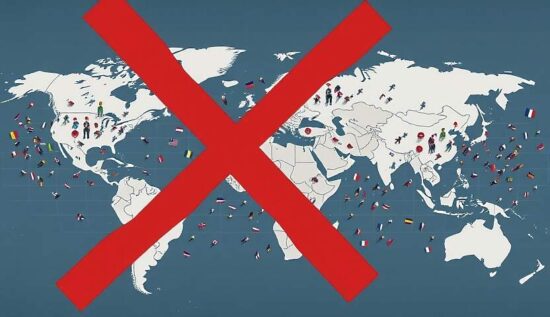The US President, Donald Trump, has announced the imposition of extensive tariffs, which could amount to billions of US dollars. The tariffs on vehicles are set to take effect on April 3, but the uncertainty remains on which countries will be affected – all 200 countries the US trades with, or just 15. The exact rates and products covered are also unclear.
According to the Wall Street Journal, Trump recently brought up the idea of imposing tariffs of 20 percent on all goods worth more than three billion US dollars the US imports annually, which would bring the total tariff revenue to its highest level since the Great Depression in the 1930s. Peter Navarro, a White House advisor, stated that these tariffs would generate revenue of six billion US dollars within a decade, equivalent to a 20 percent tariff. The intrigue continues to unfold.
The world is already anticipating the consequences of this decision by the new US President. The effect is already being felt, even before the tariffs take effect. The gold price has broken historical records and is already at a value of 3,128 US dollars per ounce. This is the best quarter for gold since 1986, with a price increase of over 18 percent. Other metals, such as silver, platinum and palladium, are also seeing a price surge. Gold is traditionally a safe-haven asset, in which investors put their money to wait out crises and turbulence.
In the face of expected tariff effects and the predicted slower US and European economic growth, Goldman Sachs strategists have revised their forecasts for European stock market returns downwards, despite European stocks receiving the largest inflows in a decade ahead of a historic upswing in defense spending.
China is seeking cooperation with Japan and South Korea to counter Trump’s trade war, while also vowing to retaliate with countermeasures.
The US has a massive trade deficit with China, the European Union, Mexico, Vietnam, Taiwan, Japan, South Korea, Canada, India, Thailand, Switzerland and a range of other countries – in descending order. This means that all these countries supply the US with significantly more goods than the US buys from them and this imbalance greatly annoys Donald Trump, who wants to correct these trade imbalances by reshaping the global trade landscape.
The first attempt in 2019 was unsuccessful, as China simply redirected its exports to other Asian countries, taking advantage of Washington’s move. However, this time it seems different.
Olga Belenkaja, head of the macroeconomic analysis department at Finam, explains, “Tariff wars are gaining momentum and spreading not only across countries but also across industries. It is already clear that the tariff war 2.0 will be harsher and more comprehensive than the previous one in 2018-2019. Simple solutions like production relocation to third countries to avoid tariffs are no longer as effective as before.”
Natalia Miltschakowa, leading analyst at Freedom Finance Global, adds, “This is not a replay of 2019, when Trump launched a trade war with China. Rather, it is a return to the era of market battles of the 19th century. Back then, European countries competed with each other for colonies and resources and today, practically the whole world is competing for access to the US market and President Trump is trying to use this to his country’s advantage.”
According to her, Trump’s tariffs are not a message to the world to engage in mutually beneficial trade, but an invitation to haggle and use tariffs as a geo-economic and geopolitical weapon. Miltschakowa believes, “This could lead to the world markets being divided between the US and those countries that most strongly defend their external trade interests, by applying pressure on the US, as China is attempting in an ‘alliance’ with Japan and South Korea.”
Many countries are trying to negotiate with Trump, such as India, which offered to reduce tariffs on American products, including almonds and cranberries. However, negotiating with Trump is challenging, as his statements are often contradictory, making it unclear what he is actually aiming for.
In the event of a failure to reach an agreement, many countries have announced countermeasures. The EU could, for example, target large US tech companies like Alphabet or financial institutions like PayPal. China also has a range of options – from applying pressure on Tesla to devaluing the yuan. Moreover, China has rare earths: if the Middle Kingdom bans the import of these metals to the US, many technology companies will be at risk.
A trade war has negative consequences for all, including the US itself. Americans will undoubtedly pay more for the same goods, inflation will rise and the US Federal Reserve will find it difficult to lower interest rates.
Secondly, the US will lose economic growth and jobs due to the destruction of production chains and countermeasures, as predicted by Belenkaja, with recession fears on the market rising in March. On the other hand, the state budget will receive additional revenue from the tariffs, which, according to Trump, should offset the tax losses resulting from the extension of the temporary tax relief in the 2017 law and further tax cuts, for example, for US production companies.
The countries affected by the US tariffs will also be impacted, with a decline in export revenue, a loss of economic growth and jobs and the need to redirect their exports to other markets and/or stimulate domestic demand. Belenkaja says, “While Chinese authorities are trying to boost domestic consumption and technology, EU policymakers are relying on an increase in defense and infrastructure spending.” All expect a slowdown in global economic growth for the year 2025.





